Despite recent pushes for diversity in Hollywood, big-screen releases continue to be a hotbed of straight white cisgender male characters, considering there was no significant change in representation for any other demographic in the past decade. The findings were reported in USC Annenberg’s “Inequality in 1,100 Popular Films,” which examined the100 top-grossing films each year from 2007 to 2017.
"We're not seeing an interesting trend either downward or upward across multiple years to suggest there's a concerted effort to be inclusive," Annenberg Inclusion Initiative founding director Stacy L. Smith told The Hollywood Reporter.
Moonlight, a film about a gay man of color, won the Academy Award two years ago, and Wonder Woman dominated last summer’s box office, but those films are hardly indicative of the study’s findings.
Women made up 31.8 percent of speaking parts in the top-grossing films of 2017. Only 33 percent of those top films had a female lead or co-lead.
The statistics regarding race on the big screen are no better, with white people filling 70.7 of the speaking roles in the top films of 2017, a percentage that has barely moved since 2007, according to the report. Of the nonwhite characters on the big screen, THR reported the breakdown as follows: “12.1 percent were black, 6.2 percent were Hispanic, 4.8 percent were Asian, 3.9 percent were mixed-race, 1.7 percent were of Middle Eastern descent and less than 1 percent each were coded as Native American or Native Hawaiian.”
Broken down even further, 20 of 2017’s films had no black or African-American speaking characters, 43 had no Latino speaking characters, and 37 had no Asian speaking characters.
While television continues to turn out LGBT fare like Transparent, Pose, Will & Grace, The Fosters, and so on, the study found that 99 percent of the characters in films in 2017 were straight or cisgender. Of the top 100 films in 2017, 81 had zero LGB characters and 19 had one or more. In terms of transgender representation, only one trans character has appeared in the top 400 films from 2014 to 2017, according to THR.
People with disabilities also continue to remain virtually invisible in Hollywood, with only 2.5 percent of speaking characters being someone with a disability. Of those, 73 percent were white and 69.6 were male.
The stats don’t get better behind the camera. Of 1,584 content creators, there were eight women directors, 34 women writers, 247 women producers, and one female composer. Of the 1,100 films examined, women directed only 43 of them.
The top solution from the Annenberg Inclusion Initiative’s ninth report on the most popular movies echoes Frances McDormand’s Oscars speech this year when she demanded inclusion riders on films.
“The inclusion rider provides a flexible set of options that can be strategically deployed to ensure that the process used to consider and hire on screen and behind the camera positions is fair,” reads a summary in the report.




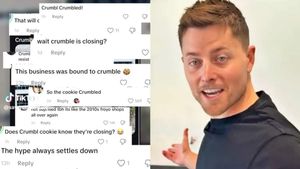





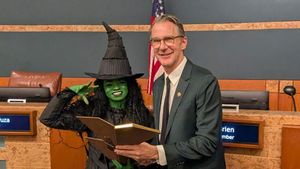



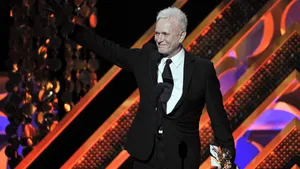
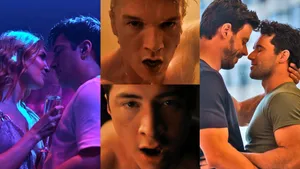






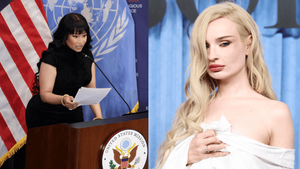







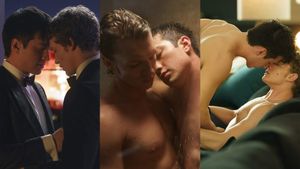






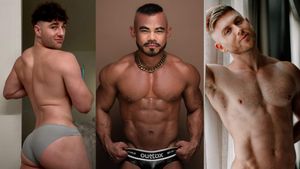

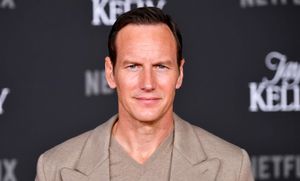


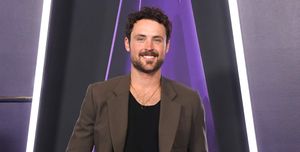














 Reed Birney as Hank Grant and Kieron Moore as Aaron Eagle in Blue Film.Fusion Entertainment
Reed Birney as Hank Grant and Kieron Moore as Aaron Eagle in Blue Film.Fusion Entertainment Kieron Moore as Aaron Eagle in Blue Film. Fusion Entertainment
Kieron Moore as Aaron Eagle in Blue Film. Fusion Entertainment  Reed Birney as Hank Grant in Blue Film.Fusion Entertainment
Reed Birney as Hank Grant in Blue Film.Fusion Entertainment Kieron Moore as Aaron Eagle in Blue Film. Fusion Entertainment
Kieron Moore as Aaron Eagle in Blue Film. Fusion Entertainment  Reed Birney as Hank Grant in Blue Film.Fusion Entertainment
Reed Birney as Hank Grant in Blue Film.Fusion Entertainment Director Elliot Tuttle at the premiere of Blue Film at 2025 NewFest at SVA Theater in New York City.Rob Kim/Getty Images
Director Elliot Tuttle at the premiere of Blue Film at 2025 NewFest at SVA Theater in New York City.Rob Kim/Getty Images The official poster for Blue Film.
The official poster for Blue Film.

